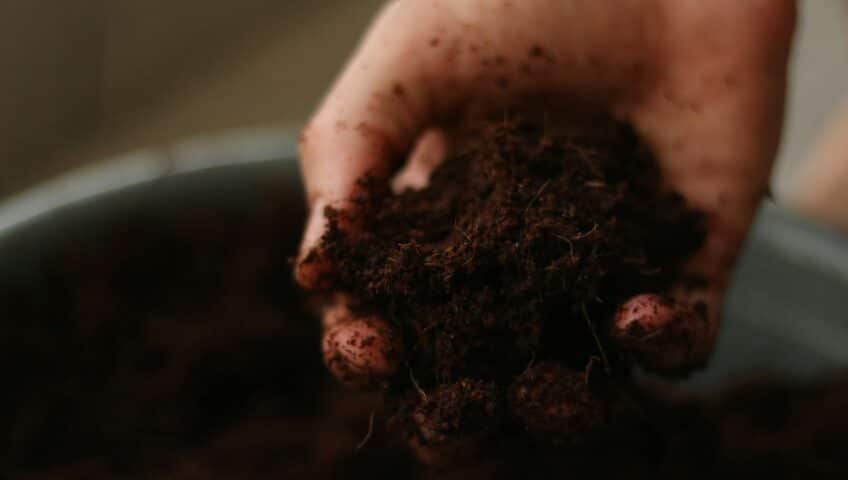Preparing the foundation for any construction is crucial, but it holds paramount importance when it comes to slab-on-grade structures. In this scenario, soil stabilisation emerges as a vital procedure to ensure the longevity and stability of the construction. At New Wave Earth Works, where we champion eco-construction and landscaping services, our focus is on integrating environmentally responsible practices with cutting-edge techniques.
In this article, we delve deeply into various soil stabilisation techniques that are both efficient and eco-friendly and suitable for preparing grounds for slab-on-grade installations. From traditional methods to innovative solutions, we cover all you need to know to make an informed decision for your next construction project in the Fraser Valley and beyond, ensuring your structure rests on a solid and sustainable foundation.
Understanding the Basics of Soil Stabilisation
Soil stabilisation is a critical process in construction, especially in areas like Port Coquitlam, where diverse soil types can present unique challenges. This process enhances the physical properties of soil, increasing its strength and durability and making it more suitable for construction projects such as slab-on-grade foundations. At its core, soil stabilisation aims to improve load-bearing capacities, reduce permeability, prevent erosion, and mitigate other issues associated with unstable subsoil conditions.
Mechanical Stabilisation Techniques
One of the primary methods of stabilising soil is mechanical stabilisation. This approach involves physically altering the soil’s structure to enhance its stability. Compaction is a common technique used to increase the density of the soil, thereby enhancing its load-bearing capacity. Proper compaction reduces voids in the soil, which decreases the risk of water ingress and subsequent soil erosion or settlement.
Another mechanical method is soil mixing, where different soil types are blended to achieve the desired properties. For instance, sandy soils, known for their excellent drainage capabilities, can be mixed with clay that has higher cohesive properties, creating a balanced soil composition ideal for supporting slab-on-grade constructions.
Chemical Stabilisation Innovations
Chemical stabilisation involves adding stabilising agents to the soil to improve its properties. Typical agents include lime, cement, or fly ash, which react chemically with the soil to enhance its strength and stability. In Port Coquitlam, where rainfall can be frequent, using lime can help to significantly reduce the soil’s plasticity and moisture-holding capacity, making it more stable and less prone to swelling and shrinkage.
Cement stabilisation is particularly effective for soils with high sand content, as it provides the necessary binding properties that sandy soils lack. By introducing cement into the soil matrix, we can create a hardened mixture that withstands environmental stressors, thereby extending the lifespan of the slab-on-grade structure.
Sustainable Practices in Soil Stabilisation
In line with environmental conservation efforts, sustainable soil stabilisation techniques are gaining popularity in the construction industry. These methods focus on reducing environmental impact while still providing the necessary soil strength and durability.
One innovative approach is the use of geopolymers, which are eco-friendly alternatives to traditional cement. Made from industrial by-products like fly ash or slag, geopolymers not only stabilise soil but also help in recycling waste materials that would otherwise contribute to landfill volumes.
Additionally, the incorporation of organic polymers into the soil has shown promising results. These polymers increase the soil’s cohesion and resistance to water, without the significant carbon footprint associated with more traditional stabilising agents. This method is particularly advantageous in Port Coquitlam’s variable climate, offering durability and environmental sustainability.
Advanced Geosynthetic Solutions
Geosynthetic materials, such as geogrids and geotextiles, play an essential role in modern soil stabilisation techniques. These materials are used to reinforce soil, especially in areas where soil conditions are poor or the terrain is problematic.
Geogrids are particularly effective in confining soil and distributing loads evenly, which is crucial for slab-on-grade construction. They prevent soil movement and provide a stable base for the concrete slab. Geotextiles, on the other hand, are used to improve soil drainage and filtration properties, preventing water build-up which might otherwise lead to soil instability.
Implementing these geosynthetic techniques not only ensures a more robust foundation but also significantly extends the life of the construction project by preventing common issues like settling and cracking of the slab.
Building a Solid Future
At New Wave Earth Works, we understand that the foundation of any successful construction project lies in the quality and stability of its base. Soil stabilisation is not just a step in the construction process; it’s a commitment to longevity, safety, and environmental responsibility. By leveraging both time-tested and innovative soil stabilisation techniques, we ensure that your slab-on-grade projects in Port Coquitlam are built on solid ground and ready to withstand the challenges of time and nature.
If you’re planning a construction project and need expert guidance on soil stabilisation, don’t hesitate to reach out. Let’s work together to lay a foundation that not only supports your structure but also preserves the integrity of our beautiful landscape. Contact New Wave Earth Works, a civil construction company, today, and make your next project a benchmark for sustainability and excellence in the construction industry.


